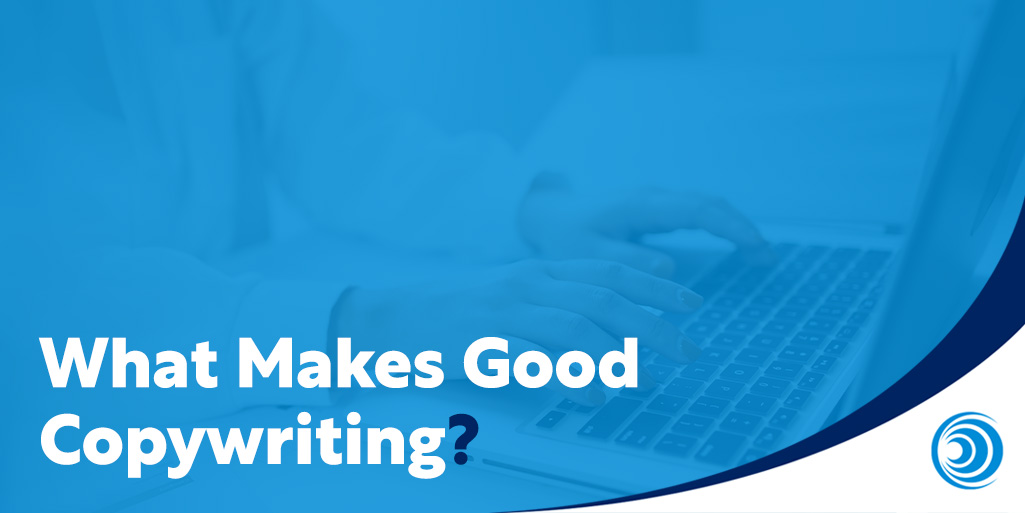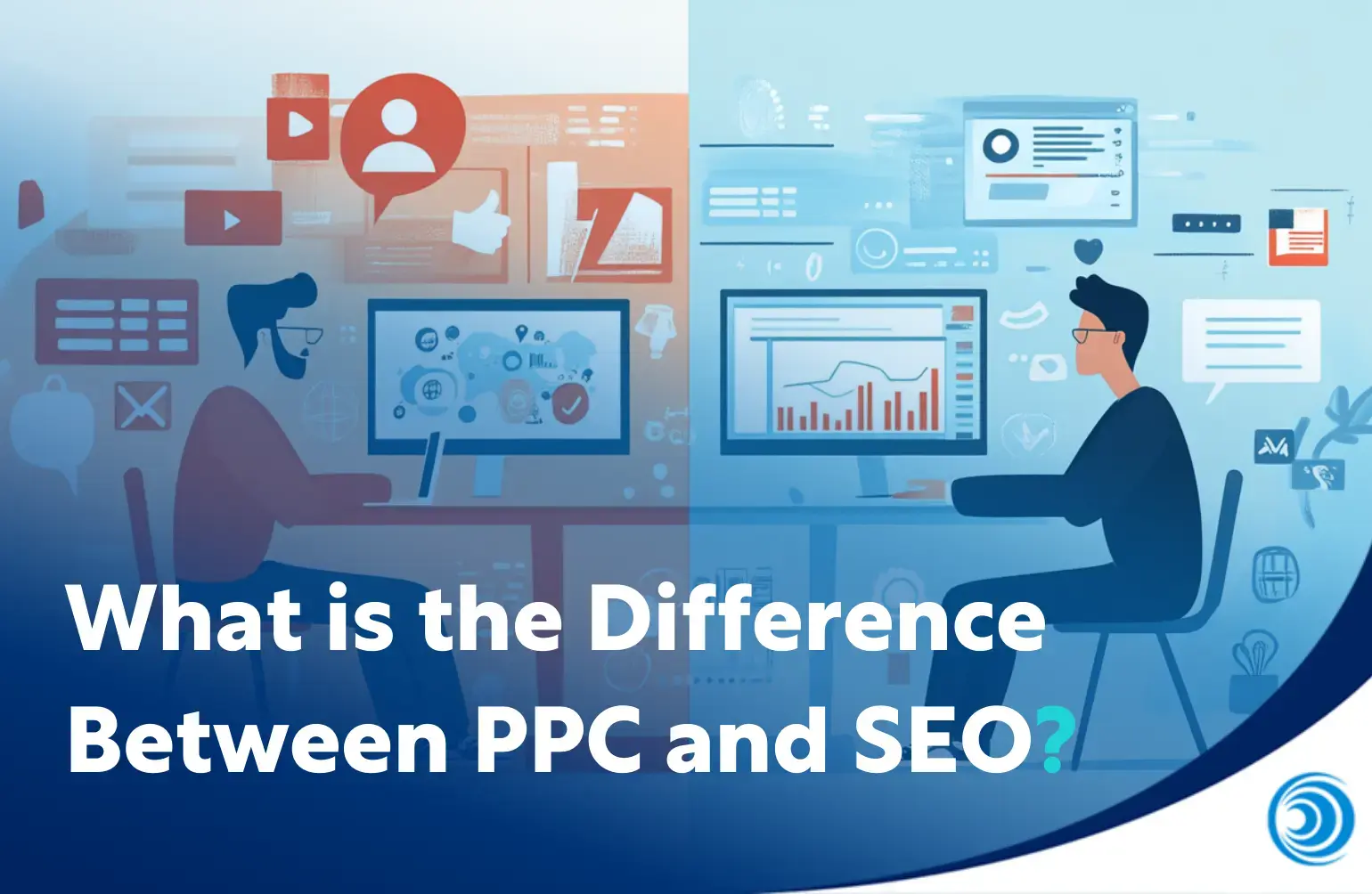
What Makes Good Copywriting?
Great copywriting is the secret ingredient to good marketing.
It’s vital to the success of every element of content marketing: websites, social media ads, blogs, newsletters, and more.
In this article, we will look at how to write compelling copy and engaging content.
In this article we will look at:
What is copywriting?
Copywriting is the act of writing persuasive and engaging text for advertising or marketing purposes.
Copywriting has a rich history. It has evolved over the years, but essentially it is based around writing memorable 'copy' that drives customers down the sales funnel and - ultimately - drives more traffic and increases conversion rates.
Why is it called 'copywriting'?
'Copy' means material or text for publishing. This usage began in the 15th century when text had to be physically copied by hand.
What's the difference between copywriting and messaging?
The difference between copywriting and messaging, lies in their respective goals.
The goal of a good copywriter is to write copy that compels a specific audience to take a positive action when they read or hear it, such as making a purchase or subscribing to a service.
Messaging, on the other hand, is a thematic concept that involves the tone, information ordering and specific phraseology a brand uses.
The copywriting process
The copywriting process can make the difference between good copywriting and great copywriting.
1. Research
Knowing a subject well is a copywriting essential. At the most basic level, it ensures your copy makes sense. On a deeper level, it means you know what your copy is up against.
Research for copywriting should include research of the subject (including customer and product research) and the competition.
One of the keys to good marketing is having a distinct brand. This means it should stand out in relation to its competitors. If you don't know their messaging, writing something distinct from it will simply come down to chance.
2. Writing copy
Everyone has their own content writing process.
Some people like to write copy all at once after hours of research, others like to alternate between research and writing. Some like to work on one project at a time, others like to switch between them.
Project managers can help improve this core stage of the process by assigning projects to the relevant copywriters at the right time in their schedule, and by considering their knowledge level in relation to the content topic.
It is also important to ensure the copywriter has a detailed brief, for example, providing a clear framework at the start of creating a blog post.
3. Editing, proofreading, and revision
These terms are often confused and/or used interchangeably, especially editing and proofreading.
Perhaps the most important point to understand about all three terms is division of labour. In other words, having a second or even third person carry out these tasks is better than relying on the main copywriter.
A separate reviewer can bring a fresh and more objective perspective to the copy. Their focus is exclusively on the purpose of the copy and whether it is going to make sense to keep readers engaged.
What's the difference between editing and proofreading?
The main difference between editing and proofreading is that editing typically happens before proofreading.
Editing involves making changes to copy related to:
-
Content
-
Grammar
-
Structure
-
Formatting
It could involve removing or adding new content, rephrasing or rewriting existing content, and fact-checking.
Proofreading on the other hand is done after editing. It involves checking for typos, spelling mistakes any other errors.
Copywriting tools
There are a number of useful copywriting tools on the market to assist in writing persuasive content. These range from tools that generate subject lines to ones that give phrasing and grammatical suggestions.
One example of a popular tool is Hemingway Editor. This free tool grades writing according to how the famous writer Ernest Hemingway wrote - i.e., clearly and concisely.
Types of copywriting for marketing materials
Where there's copy written for marketing, there is copywriting.
This definition allows for an almost limitless types of copywriting, so let's limit the types we describe to copywriting for digital marketing.
1. Website copywriting
Today, websites function like shopfronts.
Website copywriting strategies should focus on sales copy quickly and efficiently summarising what you sell and who you are.
Common website copy writing mistakes include:
-
Putting important information 'below the fold': That is, below the point it would first appear on screen, i.e., so that users would have to scroll down to find it
-
Not sequencing your information in order of importance: Like an elevator pitch, you need to quickly 'get to the point' whilst using compelling sentences to deliver your value proposition
-
Being too long-winded: To write concise and short sentences is crucial. You only have a few seconds to make your point quickly - otherwise users could look elsewhere to find answers
2. Blog post copywriting
Blog posts don't convert all readers into potential customers. However, good quality copy has the potential to do this.
Small adjustments, such as a great headline and active language, can make a big difference.
Blog posts can fall into two main categories: thought leadership and SEO blogs. Each type of blog has its own purpose.
1. Thought leadership blogs
Thought leadership (or opinion pieces) are blogs that share your thoughts, experiences, and/or predictions about industry issues.
They provide an opportunity for you to demonstrate your knowledge and build a rapport with your audience (or buyer persona).
In general, these pieces should use a conversational tone. However, if the topic in discussion warrants it, you can use a more passive voice.
2. SEO blogs
Copywriting for an SEO blog post is more complex and needs to be focused on meeting the search intent for relevant keywords.
SEO blogs need to follow stricter structures in comparison to thought leadership pieces. The different sections of the blog post need to be planned and labelled clearly, for both readers and search engines.
The copywriting used in an SEO blog also needs to be very concise and accurate. It should at the very least be compared to the competitor blog posts it's competing against.
One of the key features is writing for featured snippets. These are snippets of information that Google places in the SERPs (Search Engine Results Pages). There are several copywriting tips on how to target these, here are just a couple:
-
For regular featured snippets: write headers as questions and then repeat back the question in the answer. Make sure that the answer is written like a concise and clear definition, using no more than 320 characters (including spaces).
-
For list styled featured snippets: Write a header (ideally a h2) that states what the list is, followed by numbered smaller headers (h3) that list each point.
3. PPC ads copywriting
The main objective of advertising copy for PPC (pay-per-click) advertising is to demonstrate to the user you understand their pain points and that your business has the best solution to solve it.
A good place to begin writing effective ad copy is to write in the language of your user rather than the language of your industry. You should aim to have several customer-focused keywords and phrases in your copy.
Remember to keep it snappy and consider an emotional trigger to snare potential customers and draw them into the sales process.
4. Email marketing copywriting
Email copywriting is a great way to stay in touch and maintain a relationship with your customers. Good copywriting can get you great email marketing results.
The ultimate test is to get users to open your newsletter. This is a key indicator to demonstrate you have grabbed the attention of your target audience and are sending the right message in your email communications.
Using power words in your email subject line is essential, as this is the first thing that the user sees and a primary way of encouraging them to open and read on.
Five Copywriting Tips
Tip 1: Get to know your audience
Depending on your target audience and the purpose of the piece of writing, you should adapt your style of writing and tone of voice appropriately - and use the right words.
Your tone of voice should reflect how your brand wants to be portrayed.
Take the time to carefully research your target audience. Gender, age, ethnicity, and consumer attitude to a topic. It may influence which style of writing will be most effective.
If you’re a consumer-facing business, try writing in the style of your target customer, such as taking a more casual approach to your writing.
Many copywriters might sacrifice strict spelling accuracy to connect with customers but grammar mistakes remain off limits.
Over half of consumers say that they are more likely to remember and enjoy an advertisement if it is funny.
So, try injecting some humour and personality into your work if it’s in-line with your brand voice.
However, if you’re part of a business-to-business organisation, this method may not work for you, and you need to find other ways to engage the reader's mind.
It’s important to understand who the key decision makers are in the businesses so that you can target them with relevant information.
This will help you know their pain points and what motivates them; therefore, enabling you to cater to their sensitivities in your copy.
Traditionally, B2B copywriting has taken a more formal and informative slant.
You want to educate companies on your services and show that you are knowledgeable. This is because B2B buyers typically operate in a formal process as they need to make sure they make the correct purchasing decisions.
Tip 2: Pick a good title
We all say don’t judge a book by its cover but it’s inevitable, we all do it.
On average, 8 out of 10 people will read the title or the headline of your copy, but only 2 out of 10 will continue to read the rest.
This highlights how important it is to write an enticing title.
But how can you write a great title?
-
Include numbers. People are attracted to numbers and lists, so they’ll automatically be drawn to your article or blog. Buffer’s Courtney Seiter says, “Numbers work well in headlines because humans like predictability and dislike uncertainty.”
-
Ask a question. This will help generate curiosity for the reader, making them want to find out more.
-
Put emphasis on value. What is your reader going to get out of reading your blog? Let them know how they’ll benefit from reading your content.
-
And, finally, include the reader. Direct address is tactful as it will grab the reader’s attention.
Consider how your title looks in the SERPs
If you are familiar with SEO and hoping that your blog will rank in Google (i.e., the search engine results pages, or SERPs), then you need to consider how your title looks in comparison to its competitors.
To do this, you can simply look at the top 5 blogs for the same target keyword. Then, come up with a title that you think will get more clicks than those.
Of course, over time the rankings might change and you might need to update your title to better reflect this.
This is especially the case if, for example, another one or two blogs appear that have the exact same title as your article.
Tip 3: Write a great opening
Every powerful piece of content starts with a great opening. Your opening line should create intrigue. It should your draw your reader in. Literature is full of famous examples of this.
As Stephen King once said:
An opening line should invite the reader to begin the story. It should say: Listen. Come in here. You want to know about this.
You could start with a question. People are inquisitive, they’ll want to know the answer, resulting in them reading on.
One way to intrigue readers is to open with a bold statement. This technique will shock or even provoke the reader, enticing them to continue reading.
A great example of this is can be seen in the opening words of The Stranger by Albert Camus:
Mother died today. Or maybe yesterday; I can’t be sure.
Or Moby Dick:
Call me Ishmael. Some years ago — never mind how long precisely — having little or no money in my purse, and nothing particular to interest me on shore, I thought I would sail about a little and see the watery part of the world.
Of course, novels are their own genre, but similar principles can be applied.
Tip 4: Avoid jargon
Don’t overcomplicate your copywriting with complex phrases. A great copywriter can speak to the ‘common’ reader.
Using ‘big’ or difficult words doesn’t make you sound more intelligent. Short sentences using simple words with punctuation make it easy to focus on your key points and keep readers engaged.
Often a copywriter will need to use their research skills and spend a lot of time understanding a complex topic in order to communicate it with simplicity and impact.
Rather than hiring a copywriter who does not understand your industry, you could save a lot of time and effort by hiring someone who is already a content marketing expert in your field.
Tip 5: Be concise
George Orwell once wrote:
Good prose is like a windowpane.
Readers don’t want to have to sift through dirt to find gold, they want it to stand out.
Respect the fact that your potential customers are busy and they won’t want to spend a lot of time reading your copy – no matter how good you think it is.
Here are just a few, of many tips, to keep your writing concise:
-
Remove redundant and filler words.
-
Write active sentences.
-
Strengthen weak adjectives.
-
Check your word count
-
And remember, quality over quantity
Tip 6: Use bucket brigades
A bucket brigade is a copywriting technique that involves using short, compelling phrases or sentences to keep the reader engaged.
Its name refers to the idea of passing buckets of water down a line of people to put out a fire. Each person (phrase/sentence) hands the bucket to the next in line to keep the flow going.
Bucket brigade sentences go on their own line to make them stand out more. Examples include:
-
"But wait, there's more..."
-
"And here's the best part"
-
"You won't believe what happened next..."
How to improve your copywriting skills
1. Reading
Many writers over the years have recommended reading as a way to improve one's writing.
Of course, what is being read matters. So in order to create good copywriting, reading good copywriting is important.
To find this, the first step is identifying the type of content and industry you are writing about. Then, you can both read copy from that industry or look at copy from other industries and apply it to the industry you are writing copy for.
2. Writing
The practice of writing, and feedback on it, helps improve copywriting a lot.
Each copywriter will have his or her own routine and approach. The great comic novelist P.G Wodehouse wrote the following on how he wrote:
I now write stories at terrific speed. I've started a habit of rushing them through and then working over them very carefully, instead of trying to get the first draft exactly right....
As a rule, I like to start work in the mornings, knock of for a breather, and then do a bit more before dinner. I never work after dinner. Yet in the old days that was my best time. Odd.
Conclusion
Copywriting is an essential part of marketing and advertising. It is the art of writing persuasive and engaging text to drive customers down the sales funnel and increase conversion rates.
The copywriting process involves research, writing, and editing, proofreading, and revision. And there are many different types of copywriting (both thought leadership and SEO copywriting), including: website copywriting, blog post copywriting, email copywriting, and PPC copywriting.
Effective copywriting is crucial for businesses or organisations that want to increase brand awareness, drive more traffic, and ultimately increase their sales.
With a good internal process and team of writers, as well as the help of copywriting tools, businesses can create high-quality copy that resonates with their target audience and achieves their marketing goals.



